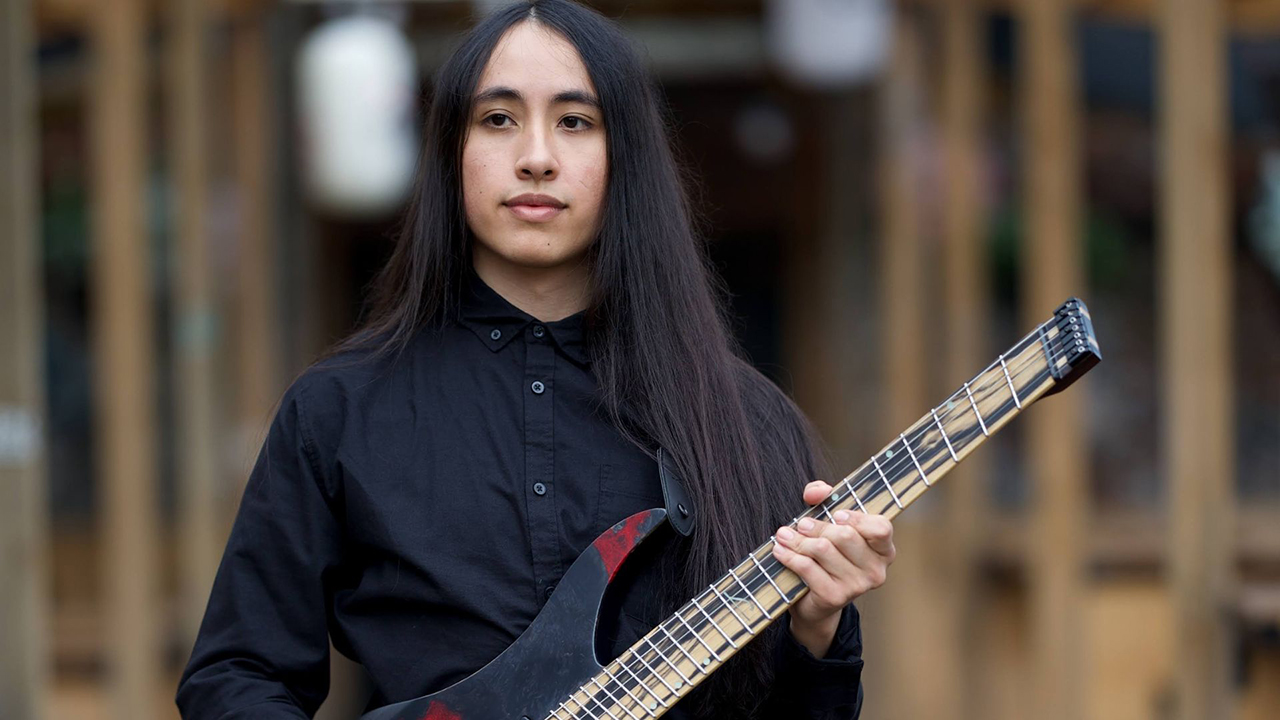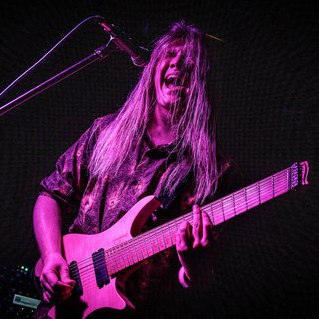“I love $200 guitars! They’re easier to play and their pickups are very responsive to my style”: Meet Sebastiside, the Colombian virtuoso making waves with budget guitars – and a ground-breaking rhythm technique
After ditching shred to focus on rhythm playing, the progressive metal guitarist has developed an innovative “hybrid rasgueado” technique

It wasn’t too far into his playing days when Sebastian Garcia, better known as Sebastiside, realized he wasn’t a great lead player. “I couldn't shred like Rick Graham and Stephen Taranto,” he reflects, “and maybe because of that, I focused on my rhythm playing.” It’s a decision that transformed his playing.
He moved to Australia after graduating from university – “because they have Plini, Caligula's Horse, and Karnivool” – and splits his time between teaching guitar, creating content and songwriting.
It would be amiss not to acknowledge the dexterity of his left hand, which flies across the fretboard on his tech-death-inspired EP, Reincarnate. But it’s his right hand, and his music’s subtle but effective rhythmic tricks, that make him unique.
“I got attached to the idea of making music interesting through rhythm,” he says. “That defines me as a person and as a player. With chords, you have dominant chords that create a lot of tension, and tonics for the release. It’s like telling a story. I try to do the same with my rhythms.
“So if you’re playing eighth notes, using triplets, syncopations, or polyrhythms adds tension and interest to your story. You don’t need to be super smart with harmony – with interesting rhythms you can play one note and it will still sound cool.”
However, the most impressive trick up his sleeve is a technique he believes he’s invented: hybrid rasgueado.
“I’ve always liked slap and rasgueado techniques, but I never liked putting the pick in my mouth. I’d miss notes; it made me feel sloppy,” he says.
All the latest guitar news, interviews, lessons, reviews, deals and more, direct to your inbox!
“When learning slap, I realized there were hybrid picking elements – you could use your thumb to slap and your fingers to pull on the other strings to create a strong percussive effect. So I used that idea to combine hybrid picking with rasgueado.”
He holds his pick as normal – between his thumb and index finger – freeing up his other three fingers for rasgueado raking. His typical pattern is a picked note on a low string, followed by a rake with his pinky, ring, and middle fingers – although that order can be reversed.
He also recommends that the pick should be an upstroke to give more to prepare for the motion of the fingers. “It can be used for chords and rhythm playing and leads,” he adds. “It has endless rhythmic possibilities.”
The Colombian is driven by a ‘less is more’ approach to songwriting, developing a single riff throughout a song rather than chaining riffs together. It’s an idea he’s pulled from baroque music and likens it to storytelling. “In every story you hear, read or watch, there are returning characters, but they never repeat,” he explains.
Every time the key or the melody changes, it’s a new surprise for the listener
“The story is always progressing. You can make music with just one riff when you have enough variations. Bach’s Inventions are three-note sequences in three different modes, but he made full compositions out of them. Maybe the second part is played in a different key, time signature or mode – it’s a good thing to practice.”
The journeys taken by his riffs are littered with tension and nuance across all aspects of his playing. But there’s also an emphasis on “thinking about riffs in a very melodic sense,” he says.

“In the second repetition of a riff, I would make its melody more obvious so there’s extra mobility and people know it’s developing, but they’re also not bombarded with new information. Every time the key or the melody changes, it’s a new surprise for the listener, and it can allow for a drum pattern change.”
Sebastiside’s go-to instruments are headless Legator guitars, with his first a chance second-hand purchase.
“I wanted a guitar to play more modern styles of music, but they’re very expensive to ship to Colombia,” he explains. “I found a seven-string Legator Ghost on Facebook Marketplace, which I traded for an old Laney tube amp head and cab plus cash.”
I scraped the wood of the fretboard… My luthier said, ‘You’re screwed. There’s nothing you can do about it. But it looks cool!’
Without realizing it, he’d bought a modded guitar, previously belonging to a player with a Legator endorsement. Undetermined Bare Knuckle pickups had replaced the stock humbuckers and a kill switch had been installed. He’s since left his mark on the guitar via a unique black stain at the seventh fret.
“I was just trying to implement different kinds of vibrato and I accidentally scraped the wood of the fretboard with my nail,” he says.
“I didn’t notice anything until a week later when the black stain showed. My luthier said, ‘You’re screwed. There’s nothing you can do about it. But it looks cool!’ I’m not bothered about it any more. There are stains and wear all over the guitar.”
He also owns an eight-string G8FP, and another seven, a G7FX which came stocked with Fishman Modern pickups which have proven to be “very responsive to modern techniques and legato.”
Interestingly, he’s using “the cheapest amp on earth,” an E-Con PG-20 which he bought for $30AUD as a computer speaker. Neural DSP’s Archetype Plini and Fortin Cali plugins are his go-to for his tone options. Simon Grove’s crunch preset is a particular favorite as it “reacts to my pickups really well” after a slight mid boost.
I love the challenge of making a cheap guitar sound good!
The amp isn’t his only budget buy either. Sebastiside finds a lot to love about $200 guitars. Noting that it’s perhaps related to their purpose as beginner guitars, he believes they’re “much easier to play. The strings feel loose and the pickups are sensitive so this makes the playing experience very different from my regular guitars. I get a lot of new ideas whenever I play one of those guitars and I feel I can play around with more complex riffs.
“Their pickups also tend to be unique,” he continues, stressing that the super-sensitive pickups on his Donner DST 152 are perfectly suited to his percussive style. “They don't excel in the same way expensive pickups would but they’re still usable – and I love the challenge of making a cheap guitar sound good!”
- Head to Sebastiside’s Linktree for his music and his educational Patreon platform.
A freelance writer with a penchant for music that gets weird, Phil is a regular contributor to Prog, Guitar World, and Total Guitar magazines and is especially keen on shining a light on unknown artists. Outside of the journalism realm, you can find him writing angular riffs in progressive metal band, Prognosis, in which he slings an 8-string Strandberg Boden Original, churning that low string through a variety of tunings. He's also a published author and is currently penning his debut novel which chucks fantasy, mythology and humanity into a great big melting pot.




